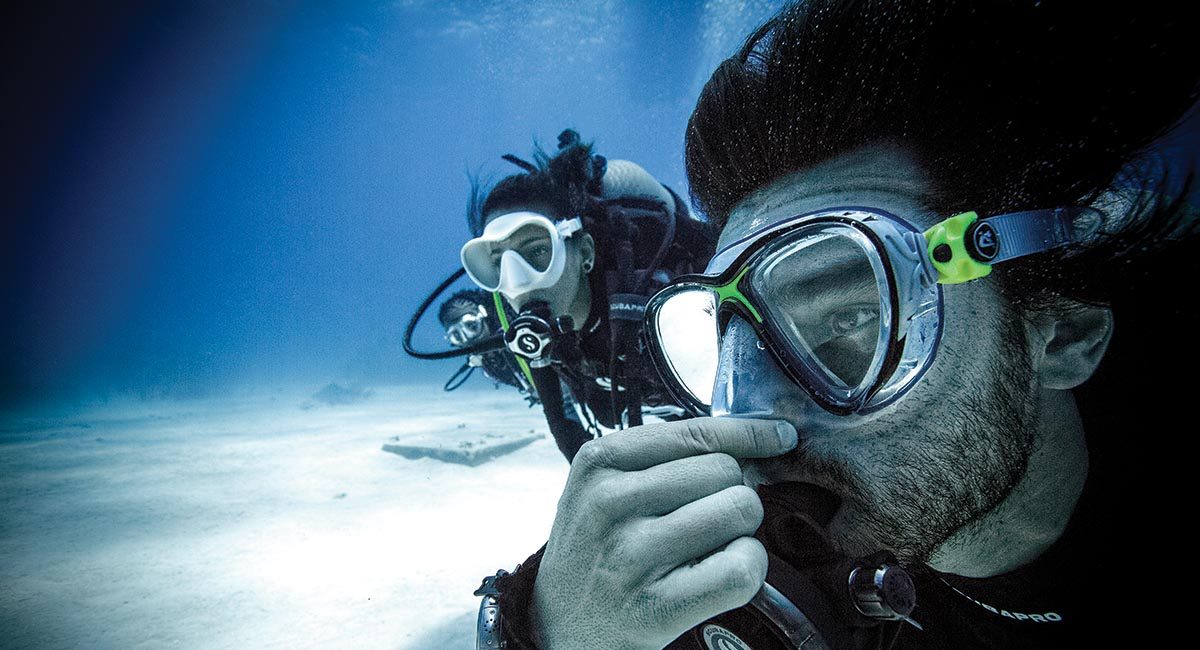ChangeAgent
Contributor
Recently, I had the opportunity to use the Tusa Imprex 3D Hyperdry (see pic, these have optical lenses glued in, but the pic is to give you an idea about the shape and) from a friend. I was impressed by the fit and comfort, especially considering I have a high nasal bridge. Unlike low-volume masks that often create discomfort or leaks around my high nasal bridge, this mask sits perfectly.
However, I face a challenge when using this mask with a single hose regulator. It's difficult to equalize my ears using the one-handed method (thumb and fingers), also known as the Valsalva manoeuvre, while having the second stage of the regulator in my mouth. Since I need my other hand for tasks such as venting air from the jacket during descent, a one-handed equalization method is essential.
As to my nose, if you look at me from the side you will see that from my forehead to the nose is like a straight line. I do not have what most folk have, a dent in the bridge between nose and forehead. That is why I cannot use a low volume mask and the likes. In the olden days I had one of those round masks, but I had a twin hose in those days and could easily get to the nose from below to clear the ears. A single hose regulator does not allow this, I have tried.
Now, to my question: does anybody know of a similar mask that allows for sufficient space for my high nasal bridge. I suspect it will need to be a single glass mask so there is ample space for my nasal bridge.
Thank you in advance for thinking with me, I look forward to your thoughts.

However, I face a challenge when using this mask with a single hose regulator. It's difficult to equalize my ears using the one-handed method (thumb and fingers), also known as the Valsalva manoeuvre, while having the second stage of the regulator in my mouth. Since I need my other hand for tasks such as venting air from the jacket during descent, a one-handed equalization method is essential.
As to my nose, if you look at me from the side you will see that from my forehead to the nose is like a straight line. I do not have what most folk have, a dent in the bridge between nose and forehead. That is why I cannot use a low volume mask and the likes. In the olden days I had one of those round masks, but I had a twin hose in those days and could easily get to the nose from below to clear the ears. A single hose regulator does not allow this, I have tried.
Now, to my question: does anybody know of a similar mask that allows for sufficient space for my high nasal bridge. I suspect it will need to be a single glass mask so there is ample space for my nasal bridge.
Thank you in advance for thinking with me, I look forward to your thoughts.





